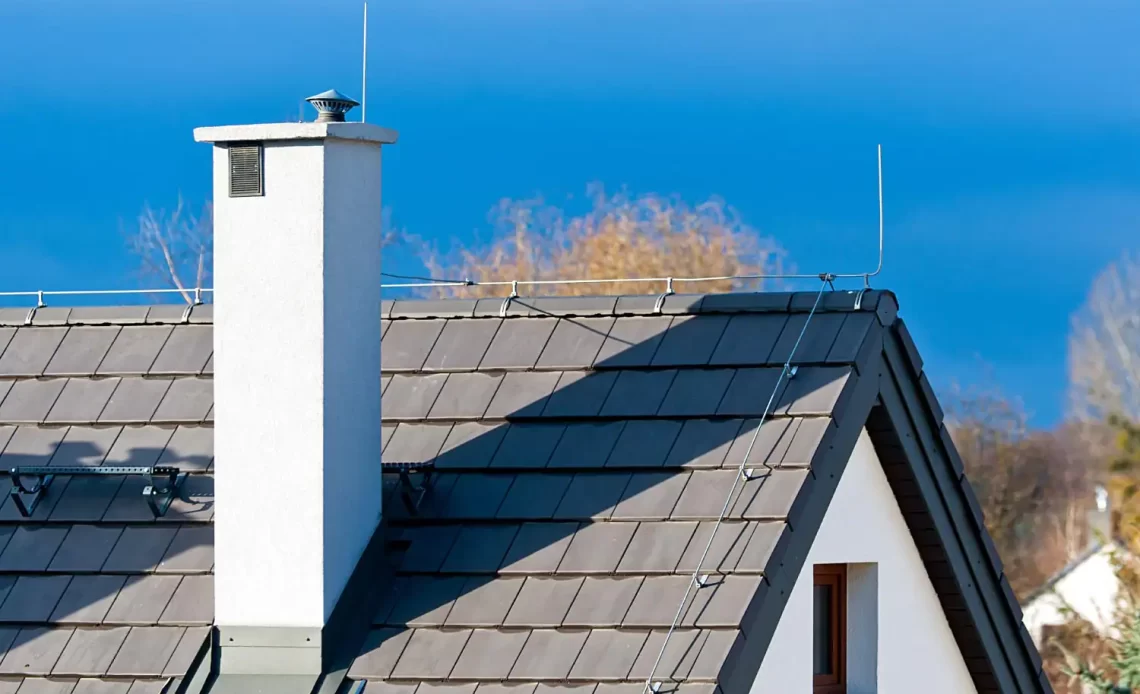Lightning rods are frequently seen in tall structures to prevent lightning damage and probable fires, but they may also be a nice addition to your house. Nothing like a cool rainstorm after a sweltering summer day. You can’t go wrong with a few lightning strikes if you want to give your favorite horror film that extra creepy element. However, if lightning strikes your home, it rapidly loses its allure. Because of this, particularly tall structures, including commercial skyscrapers and high-rise residential complexes, frequently have a lightning rod for houses installed to guard against lightning damage and forestall lightning-related fires. But is a lightning rod necessary to safeguard your home?
Work of Lightning Rods
In many situations, you would be correct if you believed that only extremely tall buildings were susceptible to lightning damage. A building’s chance of being struck by lightning increases with height. However, the building’s susceptibility is not just due to its height; it may also be attributed to its construction materials. Even the strongest structural materials, such as concrete, masonry, and steel, are susceptible, in addition to timber buildings. Large electrical currents from lightning can start fires within buildings or even produce side flashes. Building materials can be readily damaged and even destroyed by lightning. For instance, side flashes are tiny explosions of very hot, compressed air that happen inside the crevices of the structure’s components.
- Due to the enormous electrical currents each lightning bolt generates, these small explosions occur. Side flashes have the potential to ignite fires or launch debris at great velocities, inflicting harm and other harm.
- The way lightning rods function is to draw the bolt, deflect it from other, riskier surfaces, and then safely carry the electricity down the exterior of the structure and into the earth. Mounted on a building’s tallest point, lightning rods have been electrically connected to Earth by conductors and electrodes, allowing electricity to safely flow through or around the structure.
- Lightning rods occur in a variety of designs, most frequently resembling ornamental finials, depending on the architectural style of the structure and its unique danger of being struck by lightning. Solid poles, hollowed poles, flat segments, and perhaps even bristle-shaped poles can all be used as lightning rods.
- The fabrication of lightning rods typically uses copper and copper alloys, but other conductive metals can also be employed. Lightning rods, for instance, frequently make use of aluminum.
Should You Install a Lightning Rod in Your Home?
Because lightning hits on smaller structures so seldom, the vast majority of residential dwellings do not have lightning rods installed on their roofs. However, having a professional install one is a smart idea if you live in a region prone to lightning strikes or if you simply want some extra security and peace of mind. A lightning protection system for a private residence is constructed out of the same components and implemented in the same manner as one for a commercial or institutional structure. It’s still possible that the bigger structure has numerous rods and wires going down to the earth. Since it requires the installation of a grounding system, you should, as a rule, entrust work such as this one to trained professionals. The price of installing a lightning safety system is determined by several different factors, including the following:
- The kind and quantity of rods that are required
- The dimensions of your property
- The height of your roof, as well as its pitch
- The ease (or difficulty) of the assembly and grounding is determined by each factor individually
The national average for this service is $1,500, however, the low end can be as low as $400 and the high end can be more than $2,000. The average cost throughout the country is $1,500. This sum takes into account both the materials and the labor. A permit is required in many municipalities to guarantee that your system complies with local safety standards. In this scenario, you may anticipate an increase in the expenditures associated with your project of between $50 and $500.
Alternate Possibilities
Although installing lightning rods or a complete lightning protection system is the best way to safeguard your house against lightning strikes, you may take additional precautions if you’re hesitant to take such a drastic measure. For instance, you may secure not just your electrical appliances and gadgets but also the electrical system in your home by installing surge protectors designed for the entire house. Lightning strikes pose a serious threat to the property, but these protectors lessen that threat dramatically.
The Takeaway
The setup of a lightning shield to safeguard your property is neither simple nor inexpensive. However, putting a lightning pole (perhaps many) might be the perfect solution for those who live in a lightning-prone location or who want to ensure the safety of their family and property.

